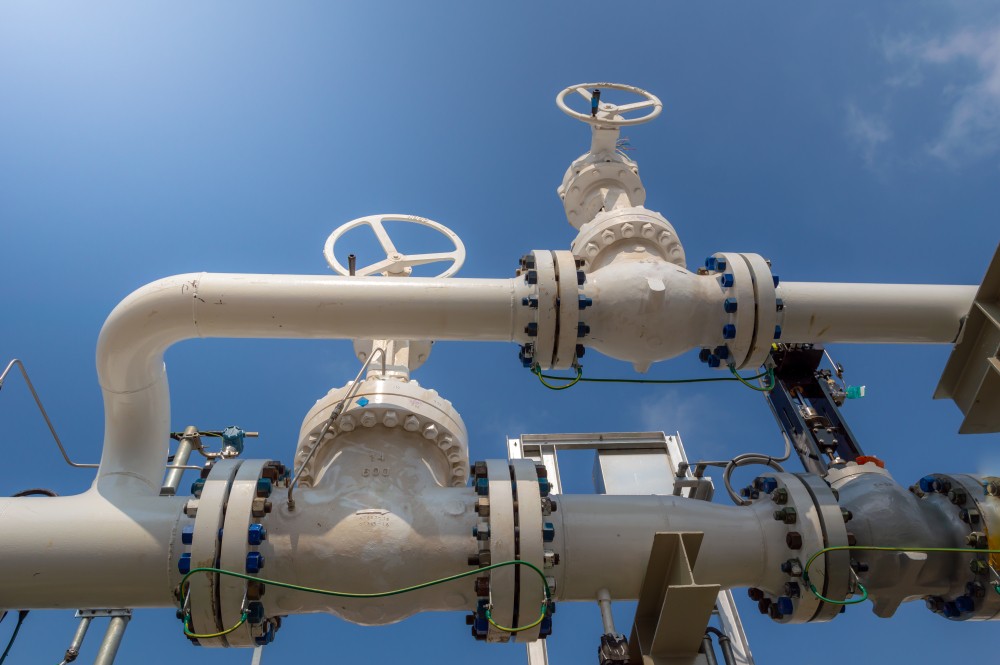Quick Look:
- WTI crude is up by 0.3% to $85.43, and Brent crude is up by 0.5% to $89.35 amid global tensions.
- May gasoline + +0.1%, heating oil + +0.8%, natural gas + +1.1%.
- Crude inventory +3.2M barrels; gasoline inventory -4.3M barrels.
- Tehran vows retaliation; Ukrainian attacks impact Russian refining.
In the latest commodities market update, crude oil prices have seen a modest uptick, reflecting a complex interplay of geopolitical tensions, inventory adjustments, and demand dynamics. West Texas Intermediate (WTI) crude, designated for May delivery, climbed by 28 cents, marking a 0.3% increase, to settle at $85.43 per barrel. Meanwhile, June Brent crude experienced a slightly stronger gain of 43 cents or 0.5%, reaching $89.35 per barrel.
Oil & Gas Varied: Natural Gas Leads with 1.1% Gain
The commodities spectrum showed mixed movements, with May gasoline registering a marginal 0.1% rise to $2.761 per gallon. On the other hand, May heating oil notched a more noticeable increase of 0.8%, concluding at $2.732 per gallon. May natural gas led the gains with a 1.1% ascent, ending at $1.841 per million British thermal units.
Inventory Build vs. Gasoline Draw: Market Dynamics Shift
The Energy Information Administration (EIA) reported a crude inventory build of 3.2 million barrels, juxtaposed against a draw in gasoline inventories of 4.3 million barrels and a decrease in distillate stocks by 1.3 million. Notably, the demand for finished motor gasoline surged, with a daily increase of 521,000 barrels, pushing the current demand to 9.236 million barrels a day, though still shy of the all-time high of 10.043 million barrels a day.
Middle East, Ukraine Tensions: Market Volatility Spikes
Recent geopolitical developments have injected volatility into the energy markets. Tehran’s vow of retaliation following an Israeli strike on Iran’s embassy in Syria has heightened concerns over a potential escalation in Middle Eastern conflicts. Additionally, Ukrainian attacks on Russian energy infrastructure have dented Russia’s refining capacity, contributing to market unease. Despite these tensions, an OPEC+ online meeting concluded with no adjustments to the current voluntary production cuts of 2.2 million barrels daily.
Russia Halves Gasoline Exports Amid Fuel Embargo
In response to a fuel embargo, rising domestic demand, and unplanned refinery outages, Russia has halved its railway gasoline exports, a six-month measure commencing on March 1. However, exports under inter-governmental agreements remain exempt from this embargo. Notable shifts in Russian gasoline exports have been observed, with rail exports to Mongolia, Uzbekistan, Tajikistan, and Kyrgyzstan experiencing fluctuations, while port exports have significantly reduced.
Geopolitics vs. Demand Dynamics in Focus
Experts weigh in on the energy markets’ current state and future direction. Robert Yawger, Executive Director for Energy Futures at Mizuho Securities, highlighted the robust gasoline demand in the EIA report. Moreover, he suggests that fundamental demand dynamics, rather than geopolitical events, may drive future market movements. Similarly, Sevens Report Research underscored the predominant influence of geopolitics on energy markets, with ongoing tensions keeping investors on edge.
As the global landscape continues to evolve, market participants remain vigilant, monitoring geopolitical developments and fundamental indicators to gauge the future trajectory of energy commodities.









COMMENTS